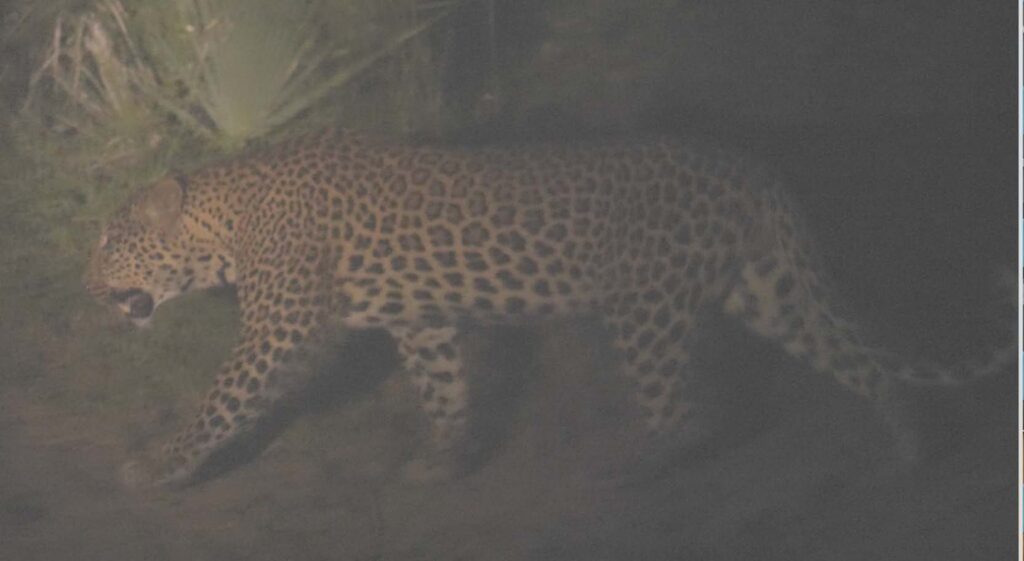Mozambique, Africa – Gorongosa National Park is Mozambique’s flagship natural area. The Park is the heart of a region where the Government of Mozambique teamed with the Carr Foundation on a long-term plan to bring back-to-life a vast and diverse natural ecosystem. Park programs also benefit the surrounding human communities – a vision for a landscape where both wilderness and
people thrive.
Today, many species in the Park have made a strong comeback. Only a short drive from the main lodge in Chitengo Camp one becomes immersed in herds of impala, nyala, kudu, waterbuck, and elephant. These herbivores are the foundational species upon which a recovering ecosystem is built, and quick to follow-suit in such a finely-tuned ecosystem would be their natural predators. Return of large carnivores here – the lions and leopards, hyaena and painted dogs – would be a strong indicator of ecological balance and a healthy ecosystem.
Mysteriously, however, despite a recovering lion population, abundant prey and suitable habitat, for more than a decade, Africa’s most elusive cat – the leopard – has shown little sign of existing in the Park. Not a single leopard had been sighted by any ranger, safari guide, remote cameratrap, or scientific expedition since 2008.
But then the unexpected happened.


Image captured by Zander Beetge to whom we are very grateful
On March 29th 2018, only 20 minutes from the Park’s main lodge, nature guide Leonardo Felix Mandevo of Gorongosa National Park was heading back to camp for the night when he flashed his spotlight through a break in palm thickets and the beam landed squarely on a male leopard. The leopard casually crossed the main road in front of a disbelieving group of tourists (Zander Beetge, Marlina Moreno and Tero Makinen) and guides (Leonardo Mandevo and Richard Lusinga). In that single flash of a light, history was made and a species not seen by anyone in the Park for over a decade was officially back on the map.
“Seeing is believing. Gorongosa is healthy. My joy doubled when I saw the happiness of our Mozambican guides who spotted the leopard. This ecosystem is their cultural and biological heritage.” said Greg Carr, who has co-managed the Gorongosa Project since 2008. Mandevo was the first to spot the leopard. He was born in Vila Gorongosa, a local community, and he co-leads safaris in to the Park daily for a growing market of adventure tourists who visit Gorongosa. “It’s an honor to have seen the leopard. I’ve been here for three years and we are always trying to spot one. When I finally did I almost didn’t believe my eyes. I’ve very happy!” said Mandevo.
Big cats survive today in Africa’s protected areas because of boots-on-the-ground work by local rangers to secure their habitats. Focused missions by the Park’s trained team of 230 rangers – all Mozambican – has, in no uncertain terms, yielded tangible results. Ranger teams patrol the Park diligently, 365 days per year, covering thousands of kilometers as they sweep over a rugged wilderness landscape that few people get to experience in its entirety. Their work has led to a 94% decline in snaring of the Park’s lions and 60% decline in poaching pressure, in just two years.
Dr. Rui Branco, the Park’s Mozambican Head of Law-Enforcement, who oversees the rangers said: “Knowing the high stakes for leopard recovery, we focused intensively on securing a key corridor along the eastern boundary of the Park that adjoins vast forestry concessions and the Marromeu Reserve. We know remnant populations still exist there. This corridor is critical for the leopard’s survival in this region. Today we have living proof of why this work is important.”
Over the coming weeks, rangers and the big cat monitoring team will continue tracking the leopard to try to understand more about where he is heading and if he is with leopard friends in the area. “When one arrives, more are likely to follow.” said Paola Bouley, Associate Director of a carnivore recovery unit supported by National Geographic’s Big Cat Initiative. “This is a male in great condition. Young males like this are the explorers who range further afield as they seek out new territories and mates, pushing the boundaries. People always ask us if we have leopards in the Park, well finally we can say ‘yes we do’.
More background: Ecosystems across the planet have evolved to accommodate both robust prey populations as well as the top carnivore species that depend on them for survival. Unfortunately, many populations of large carnivores have suffered large-scale declines: habitat loss and loss of prey; a growing illegal trade in their body parts fueled by traditional use and Eastern markets; and, conflict with humans and their livestock are all contributors. In recognition of their fragile futures, in 2016 the US listed the African lion on the Endangered Species Act. Shortly thereafter scientists demonstrated that leopards may soon follow suit if protections aren’t strengthened. Even a species as tenacious, secretive and adaptable to human-dominated environments as the leopard is simply no longer secure.
In remote corners of wild Africa—such as Central Mozambique–some of these species persist. They have a strong chance of survival if they are the focus of intensive recovery efforts such as the program in Gorongosa. The Gorongosa Project has recently signed strategic partnerships with landowners adjacent to the Park to secure and protect key wildlife corridors and to ensure that
large, connected landscapes are part of this region’s future.
The Gorongosa Project integrates conservation and human development with the understanding that a healthy ecosystem will benefit human beings, who in turn will be motivated to support Gorongosa Park objectives. For more general information, visit Gorongosa National Park – Overview.


